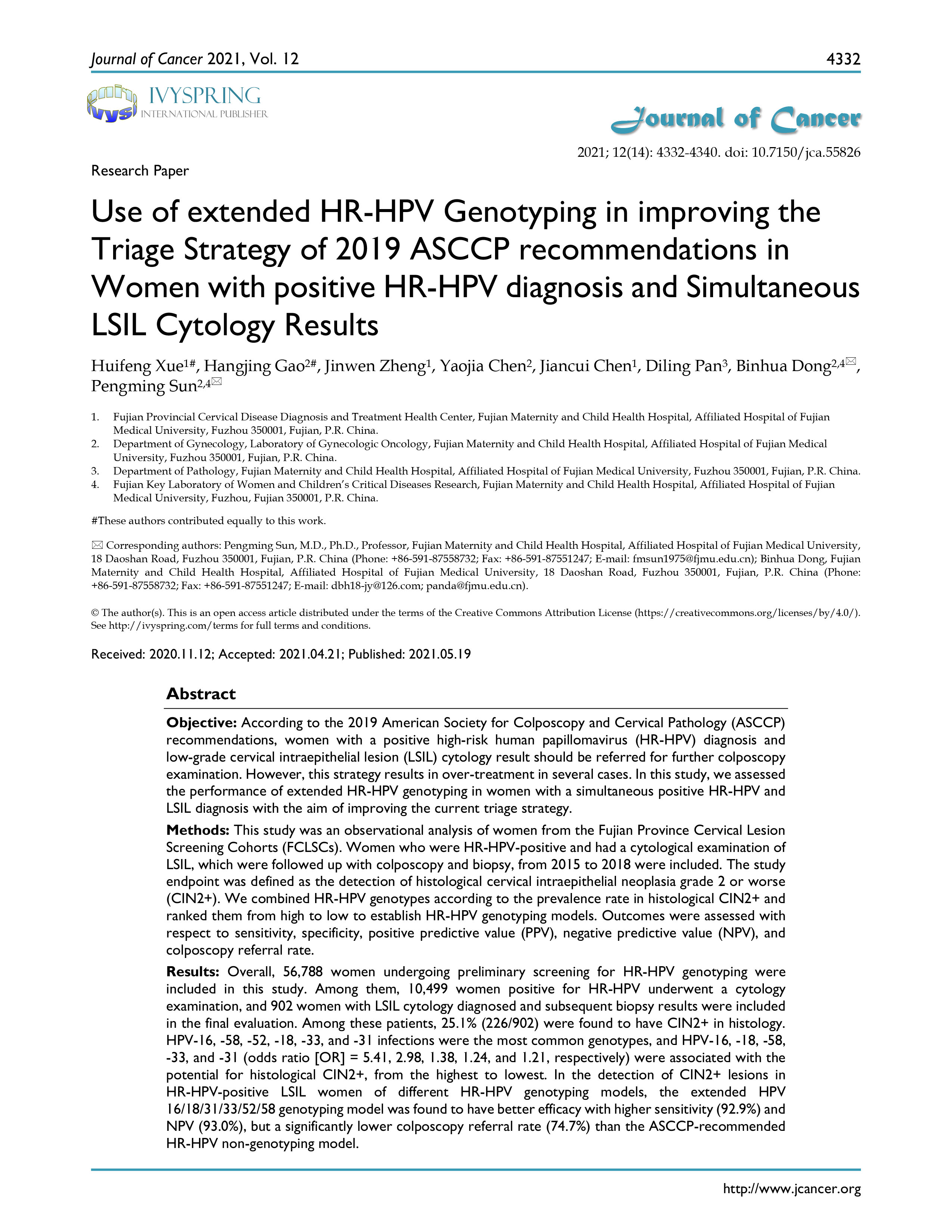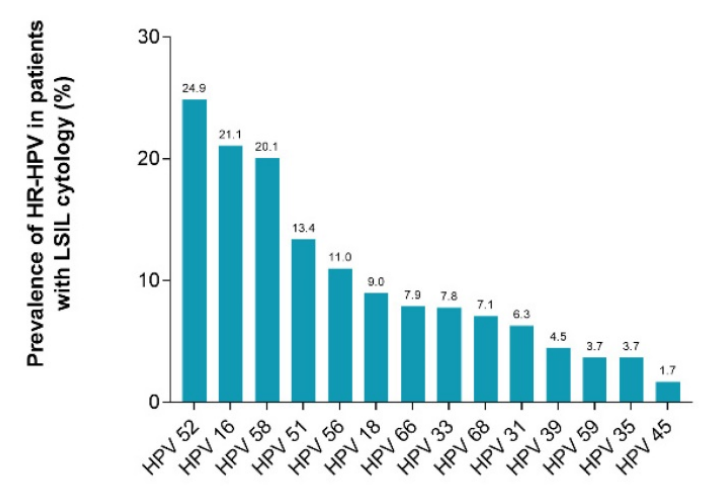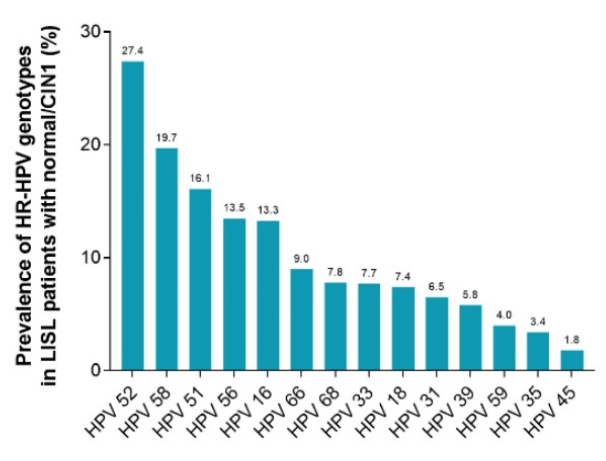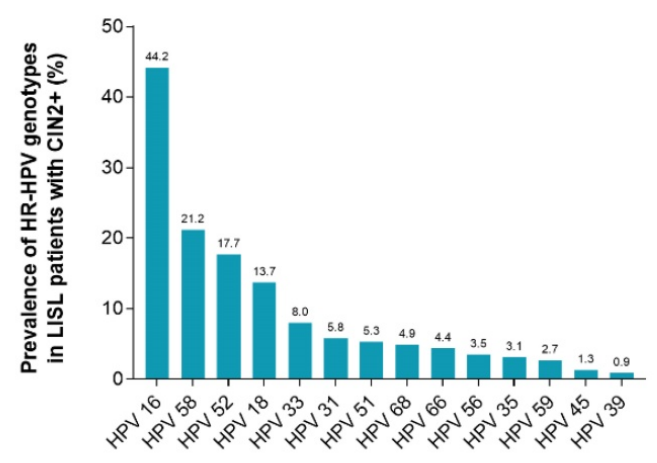Use of extended HR-HPV Genotyping in improving the Triage Strategy of 2019 ASCCP recommendations in Women with positive HR-HPV diagnosis and Simultaneous LSIL Cytology Results
![]() 0
0
![]() 2021-05-21
2021-05-21
According to the recommendations of the 2019 ASCCP guidelines, when HR-HPV is positive and the cytology result is LSIL, the risk of immediate CIN3+ is 4.3%, which exceeds the risk threshold of 4%. The referral for colposcopy is recommended. The 2019 ASCCP guidelines are based on risk assessment data from the KPNC study, using HPV detection reagents that are non-genotyping or only give HPV16/18 results. In clinical practice, it is found that many women with HR-HPV positive and cytological LSIL results do not have CIN2+ lesions after colposcopy and pathological diagnosis. At the same time, HPV genotyping products are more and more widely used. Is it possible to further triage women with HR-HPV positive and LSIL cytology results by HPV genotyping and reduce excessive colposcopy referrals? Professor Sun Pengming of Fujian Maternal and Child Health Hospital as the corresponding author, Director Xue Huifeng and Gao Hangjing as co-first authors recently published an article to study this proposition.

Study Cohort and Screening Results
The study cohort was from the Fujian Cervical Lesion Screening Cohort (FCLSCs), which has more than 200,000 clinical data. From January 2015 to December 2018, 56,788 people were initially screened by Yaneng PCR-RDB HPV genotyping test, and 10,499 people were HR-HPV positive. Those who were HR-HPV positive continued to undergo cytological examination. There were 1201 patients with LSIL. After excluding some invalid data, 1036 patients with HR-HPV positive and cytological LSIL were referred for colposcopy and pathological diagnosis, and 902 valid data were finally obtained.
Changes of HPV types in different pathological stages
Among the 902 HR-HPV positive patients with LSIL cytology, the distribution of HPV52/16/58/51/56 ranked the top 5;Among those diagnosed with Normal/CIN1, the distribution of HPV52/58/51/56/16 ranks in the top 5;
Among those diagnosed with CIN2+, HPV16/58/52/18/33 ranks in the top 5. It can be found that with the deepening of cervical lesions, the infections of HPV16 and HPV18 increase, which is worthy of being the two types with the highest risk factor.
In CIN2+, the six types of HPV16/18/31/33/52/58 accounted for 92.9%.



The triage effect of extended HPV genotyping
Among the 902 HR-HPV-positive patients with LSIL cytology, only 226 were diagnosed with CIN2+. To identify CIN2+ lesions more accurately and reduce colposcopy referrals, a variety of HPV types were evaluated based on CIN2+. The effect of the model showed that when the six types of HPV16/18/31/33/52/58 were used as referral indicators, the sensitivity and negative predictive value were both over 90%, and the referral rate of colposcopy could be reduced by 25.3%. A better balance between reducing colposcopy referrals and avoiding missed tests can be used to complement existing screening strategies.






